Two weeks ago, a program of National Radio of Spain was made from the village of Medinaceli (in the province of Soria, northwest Spain), and this made me think about the possible relationship between this village and the "Cristo de Medinaceli" (Christ of Medinaceli). I have investigated it --because I was very curious-- and now I am going to tell you what I have found.
Talking about the village, I can tell you that Medinaceli is one of the most beautiful villages in Spain. If you have the opportunity to visit it, I can tell you that it is one hour from Madrid, in the direction of Zaragoza.
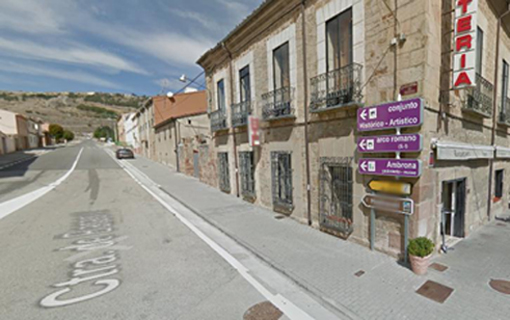
Deviation of the motorway towards the new area of Medinaceli –where the most of the people live-- and above the old zone.
If you look up to the old area, you will see, on your right, the famous Roman Arch --which is the only one with 3 arches in Spain. Dated in the 1st Century, the central arch would be accessible for carriages and the sides for pedestrians. It was declared a National Monument since 1923--. This arch indicated the limit between Caesaraugusta (Zaragoza) and Clunia. This also marked the entrance to the villa.
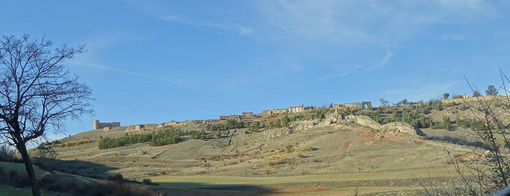
The old area
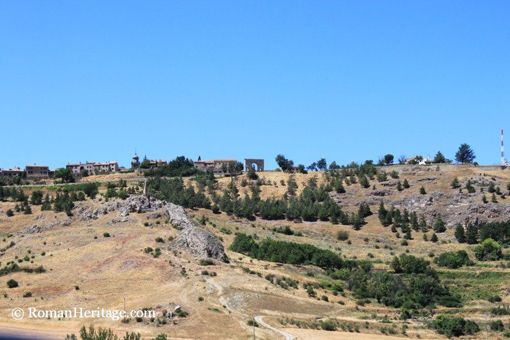
The Roman Arch a little bit more close up

The Arch
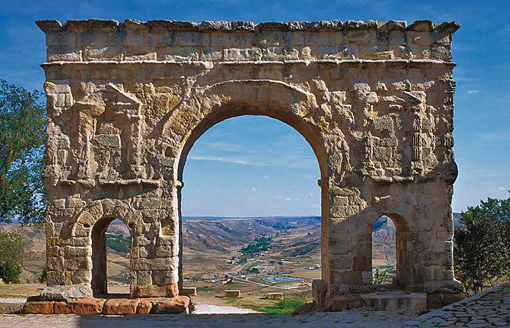
Landscape in front of Medinaceli through its Arch
And if you look up to your left, you can see the Castle --which was owned by the Dukes of Medinaceli, before moving to the Ducal Palace--.
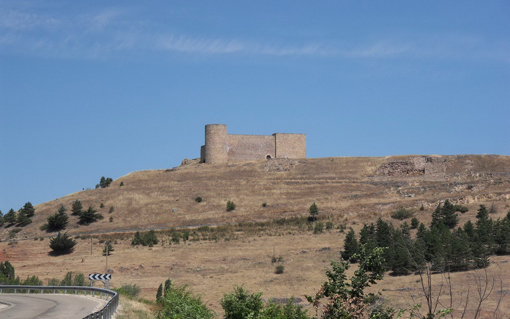
The Castle
If you go to the middle of the old village, you can find the Main Square with the Ducal Palace.
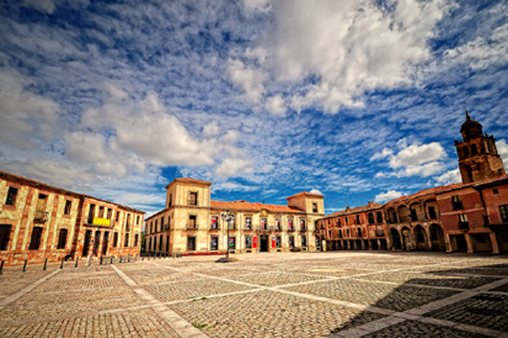
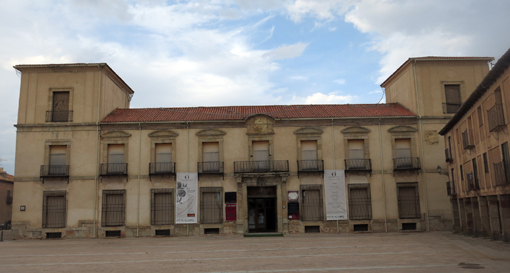
The Ducal Palace
Behind the Main Square, you can also see the tower of the Church-Collegiate Church of “Santa María”. The Dukes of Medinaceli asked them to build this Church. Inside there is a replica of the Christ of Medinaceli --the original is in Madrid--; there is a Christ with artistic value and you can also see the Museum of Sacred Art.
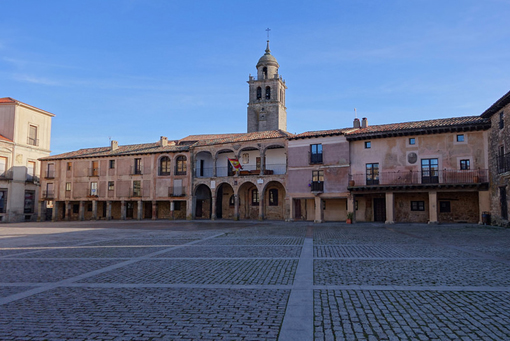
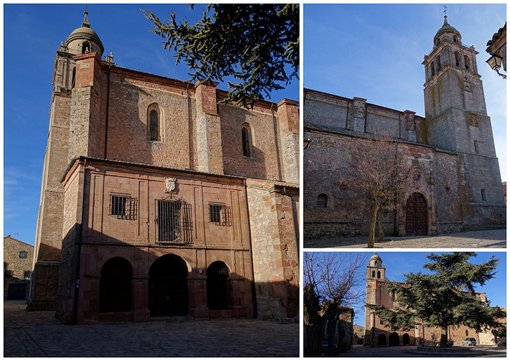
The Collegiate Church
But inside the Square, you can see the (La) Alhondiga --which was formerly used as a warehouse and trading center--.

The Alhondiga
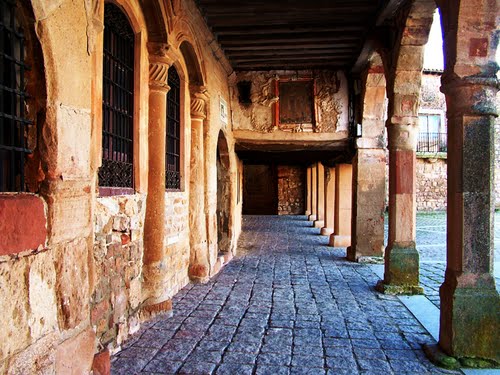
The portico of La Alhondiga
If you want to eat or leave your luggage --to spend a night in Medinaceli--, you can choose among the Hotel-Restaurant "Duque" and the Hotel-Restaurant "La Cerámica".
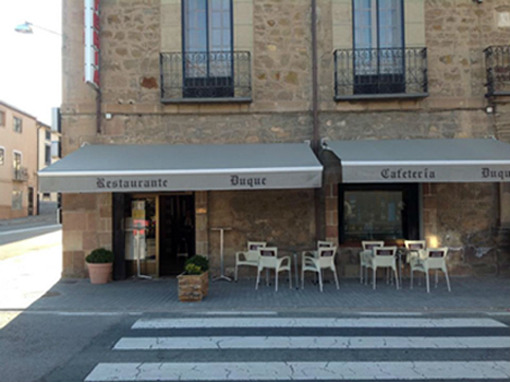
“Duque”
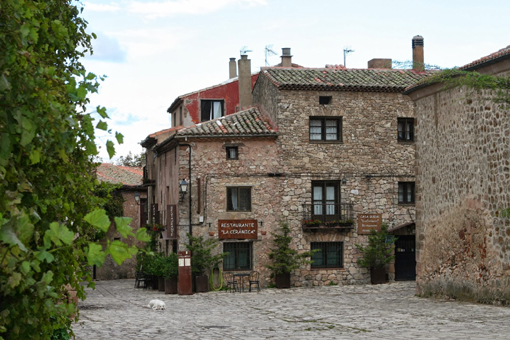
“La Cerámica”
These are some streets and the tower of the Collegiate-church:
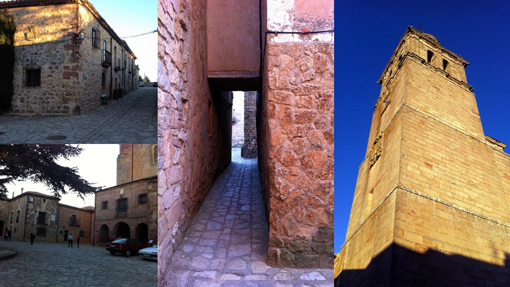
Now I know that the name "Christ of Medinaceli" comes from the fact that this statue is in the Basilica of Our Father Jesus of Medinaceli, in Madrid, --which is on land donated by the Dukes of Medinaceli--.
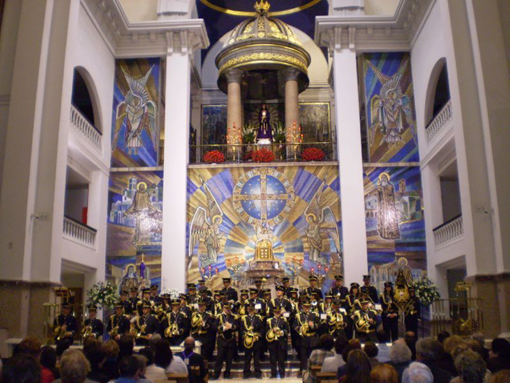
The Basilica
The story of this carving is very curious: It was taken by the Capuchin friars to La Mamora, taken by Spain in 1614, to receive worship by the soldiers. In the year 1681, in the month of April, the city fell, and the statue with it, in the hands of the Sultan Muley Ismail, who decided to send it to the city of Mekinez, as proof of victory. In Mekinez, it was dragged and thrown around the streets, so that people could mock it. A Trinitarian father, seeing what was happening, decided to speak with the king to recover the statue, offering the father as much gold as the statue would weigh. When it was going to be heavy, it greatly reduced his weight miraculously to the king's anger. The purchase of the statue was finally made by the Trinitarian Fathers, proof of this is the scapular with the trinitarian cross (red and blue), that the statue carries. This scapular was the "safe-conduct" to let the statue go to Christian lands and it meant that the Trinitarians had paid for it.
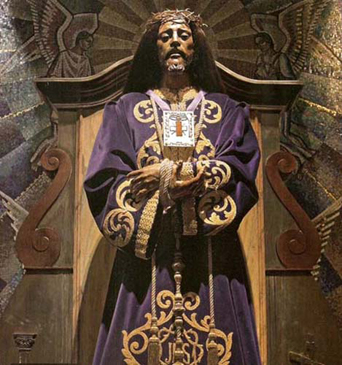
Christ of Medinaceli
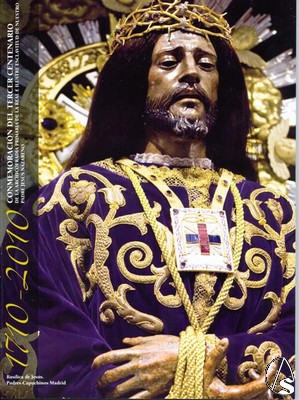
Christ with the Trinitarian scapular
The statue was taken to Madrid, in the middle of the year 1682, where it is received with great devotion. Upon arrival, a large procession is organized. The statue begins to be known as Jesus of the Rescue.
In 1710, the Congregation of Slaves of Jesus Nazarene is constituted. From 1819 the king figures as protector of Slavery. The statue of Jesus Nazarene began to be known as Medinaceli thanks to the chapel, in which it was staying, was on land provided by the Duke of Medinaceli –as I told you before--. In 1928, the Enslavement of Jesus Nazareno was elevated to Archicofradía Primary, with the power of grouping to as many associations of the same name and title, erected in national territory, so they request it, reaching to have 42 Archicofradías –an Archicofradia is a Brotherhood more ancient or with greater privileges than others of the same city-- , added in Spain, at the present time.
The statue was moved to various places, within Spain, during the Spanish Civil War (1936 - 1939), to protect it from the bombings of Madrid and finally left to Switzerland, in 1937, to participate in an exhibition of art works of the League of Nations. It returned, in 1939. In 1945, Francisco Palma Burgos made a superb processional Throne for the Nazarene. The Nazarene statue was part of the Way of the Cross, that took place, on August 19, 2011, on the occasion of the World Youth Days, presided by Pope Benedict XVI, in Madrid.
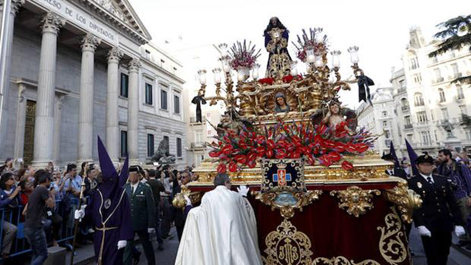
The processional Throne
The statue was made in Sevillian workshops, in the seventeenth century, attributed to the circle of the imaginary Juan de Mesa. It is full size to dress, consisting simply of a cloth of purity. It has a hair carved, although it is not shown to be covered by the natural hair that is put. It consists of a large trousseau composed of more than thirty robes, among which stand out one from 1846, given by the King Francisco de Asís, and another, from 1883, a gift from the Duchess of Medinaceli. For great occasions, like the first Friday of March or the procession, Jesus wears a solid gold crown, weighing half a kilo, with embedded gemstones, a gift from Madrid's jewelers, in the 1950s.
On the left side, you can see the best robe, that Jesus of Medinaceli has.
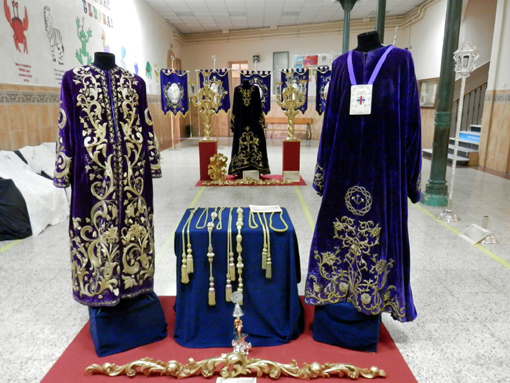
The best robe on left side
Our Father Jesus of Medinaceli is to worship in the church of the Capuchin RR of Jesus Street, in Madrid. He presides over the temple from his Alcove. Every Friday of the year Our Father Jesus Nazarene is visited by thousands of devotees. On the first Friday of March of each year his multitudinous “besapiés” (it should be something like “to kissfeet”) takes place, to which many devotees go.

Besapiés
Traditionally a member of the Spanish Royal Family attends to pray before the statue. This year –almost two weeks ago--, our King, Felipe VI, visited the temple.
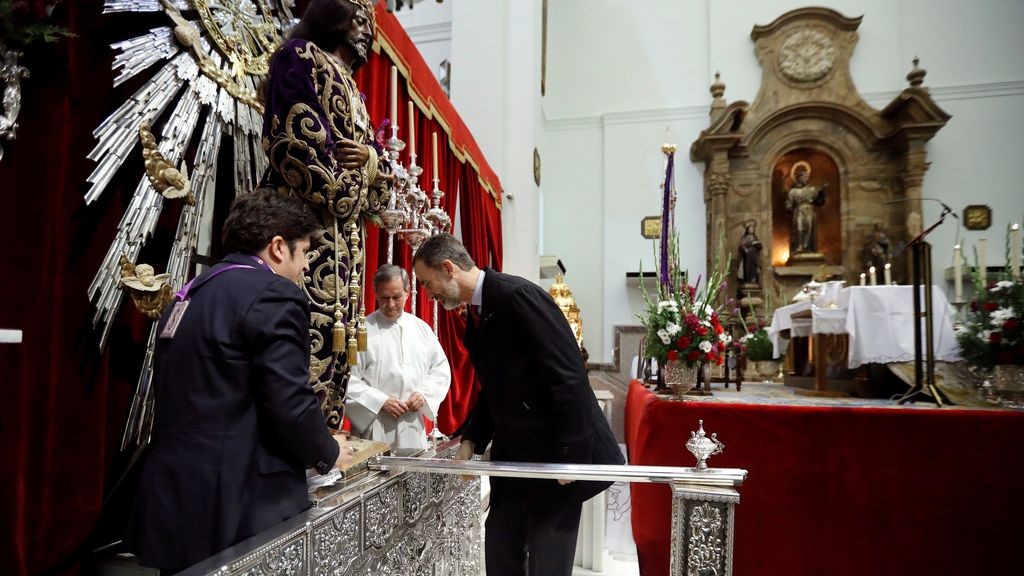
Note: I am sorry, but I could not change the size of the picture.
The statue of Jesus of Medinaceli arouses much devotion in many places of Spain, finding numerous copies of the statue and brotherhoods, that pay him veneration. Also abroad, the Nazarene of Madrid receives fervent devotion, the most striking being that of the Brotherhood of Jesus de Medinaceli and the Esperanza Macarena of Miami, United States.
Our Father Jesus Nazarene is taken out, in procession, on Good Friday –next March 29-- in the afternoon, by the Primary Archiconfradia of the Real and Illustrious Slavery of Our Father Jesus Nazarene, through several streets of Madrid.

The processional Throne on Alcalá street
Well, I hope that you will like this article --as you may have liked other articles of mine-- and I want to thank all of my readers, for your interest, for your trust in me, for valuing my effort --when I collect many data and I translate them into English--, for your understanding --because my English is not perfect--. And I thank you for giving me the opportunity to enjoy looking for information about the culture of my country --of which I am proud-- and share it with all of you, who are interested in knowing it. Every day I try to open to you the doors of this country, which has so much variety and richness, in Gastronomy, in Art, in History, in Science.
I do this work, with a great enthusiasm but from my humility, so that your “eye on Spain” is greater.
Until my next post, kind regards,
Luis.
Sponsored by Costaluz Lawyers.
Please click below:
